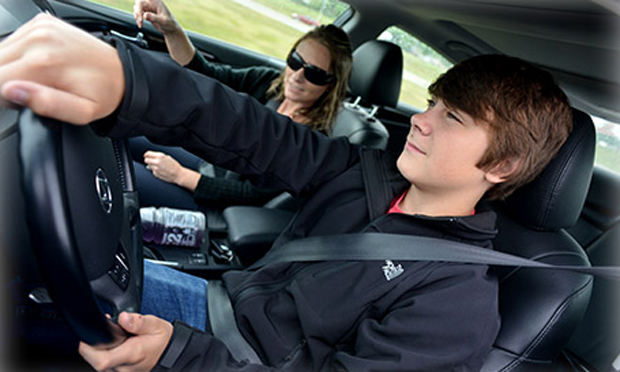Motor vehicle crashes are the No. 1 cause of death among teenagers in the United States, according to the U.S. Centers for Disease Control and Prevention. And while teens tend to drive less often than their parents and most other groups, they are much more likely to be involved in a car crash or fatal accident. Drivers between the ages of 16 and 19 are almost three times more likely to be in a fatal crash than drivers who are 20 and older. In certain circumstances, risks for younger drivers are even higher. In 2013, most crashes that resulted in the death of a teenager occurred between 6 p.m. and 6 a.m, according to an analysis from the Insurance Institute for Highway Safety. A study published in 2000 in The Journal of the American Medical Association indicates that the risk of fatal injury for teen drivers rises with the number of passengers they have.
To try to improve the safety of younger drivers, many states have implemented Graduated Driver Licensing (GDL) systems, which allow novice drivers to gradually earn driving privileges as they gain experience. In May 2010, New Jersey became the first state to require drivers under the age of 21 to display decals on their vehicles so they are easily identified. Policymakers in New Jersey had hoped that if drivers with learner permits and intermediate licenses had red, reflective decals affixed to their license plates, police could spot them more easily, and that might encourage young drivers to follow traffic laws more closely. A 2013 study suggests that the decals helped prevent injury among young drivers. In the one year after the law took effect, there was a 9 percent drop in the police-reported crash rate and a 14 percent increase in the number of citations issued to young drivers who had violated the rules of the state’s GDL system.
But what about the longer-term impacts of the decal requirement? To answer that question, a group of researchers examined driver license records as well as data from crashes that occurred in New Jersey between January 1, 2006 and June 30, 2012. The research team, led by Allison E. Curry of the Center for Injury Research and Prevention at The Children’s Hospital of Philadelphia, focused on intermediate drivers – those who are allowed to drive without adult supervision but are restricted from higher-risk behaviors such as nighttime driving and carrying multiple passengers. The resulting study, titled “Long-Term Changes in Crash Rates After Introduction of a Graduated Driver Licensing Decal Provision,” was published in 2015 in the American Journal of Preventive Medicine.
The study’s findings include:
- In the two-year period after the decal was introduced, the adjusted crash rate for intermediate drivers was 9.5 percent lower than it had been during the four years prior to the decals being introduced.
- Over the study period, the average monthly rate of police-reported crashes declined. It fell from 142.6 per 10,000 intermediate drivers before the decal program’s implementation to 126.5 crashes per 10,000 afterward.
- The amount of the reduction in the crash rate varied by driver age. For example, the crash rate was 13.3 percent lower among 17-year-olds and 8.5 percent lower among 19-year-olds.
- Self-reported compliance with the decal rule is “less than ideal.” Forty percent of intermediate drivers reported that they “always” display their decals.
The authors’ findings suggest that while the decal rule is linked to a two-year decline in the crash rate for intermediate drivers, it is unclear whether other states would see similar results. The authors suggest that future studies should seek to better understand the causal relationship between the decals and the lower crash rates. Future research also should examine the experiences of states that are experimenting with decals being used by drivers on a voluntary basis.
The authors note that this research was funded by State Farm Mutual Automobile Insurance Company but that the agency was not involved in designing or conducting the study; collecting, managing or interpreting the data; or preparing the manuscript.
Related research: A 2015 study published in Injury Prevention looks at how New Jersey’s decal program has impacted drivers with learner permits. A 2014 research roundup offers a collection of studies related to distracted driving and texting while driving. A 2014 study published in the American Journal of Public Health considers how texting bans affect motor vehicle deaths among individuals aged 15 to 21.
Keywords: teen driver, teenager, Kyleigh’s Law, Graduated Driver License


Expert Commentary